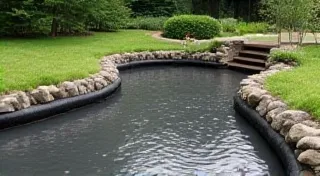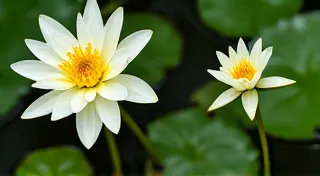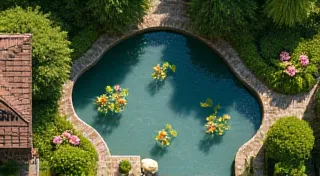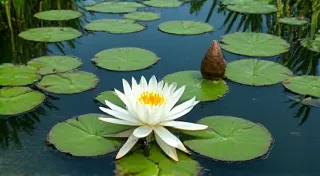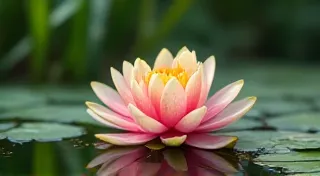How to Maintain Water Clarity in a Water Lily Pond
Achieving crystal-clear water in your water lily pond isn't just about aesthetics; it's vital for the health of your water lilies and the entire aquatic ecosystem. Murky water can hinder photosynthesis, limit light penetration, and breed algae – all detrimental to your pond’s beauty and the well-being of your plants. This guide explores proven techniques for maintaining pristine water clarity in your water lily pond.
Understanding the Causes of Murky Water
Before tackling the problem, it’s important to understand why your pond water might be cloudy. Common culprits include:
- Algae Blooms: These are the most frequent reason for cloudy water. Excess nutrients (phosphates and nitrates) from decaying organic matter, fertilizers, or runoff fuel algal growth.
- Suspended Particles: These can be silt, clay, or organic debris stirred up during pond cleaning or rainfall.
- Microscopic Organisms: Protozoa and other microorganisms can cloud the water, especially in new ponds.
- Decomposing Organic Matter: Fallen leaves, dead plants, and fish waste release nutrients that contribute to cloudiness.
Effective Techniques for Water Clarity
1. Filtration is Key
A good filtration system is arguably the most important factor in maintaining water clarity. There are several types of pond filters:
- Mechanical Filters: Remove suspended particles like leaves and debris. These often include sponges or filter pads that need regular cleaning.
- Biological Filters: Utilize beneficial bacteria to break down harmful ammonia and nitrites produced by fish waste and decaying organic matter. These often incorporate lava rock or other porous materials.
- UV Clarifiers: Use ultraviolet light to kill algae and other microorganisms, preventing them from blooming.
The size and type of filter required will depend on the pond's volume, fish load, and sunlight exposure.
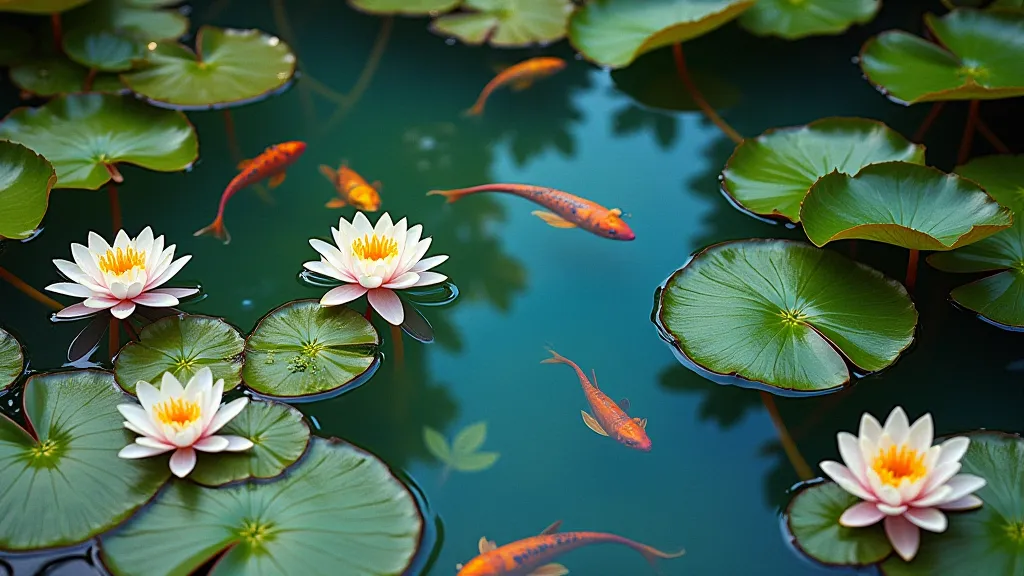
2. Regular Pond Cleaning
Consistent cleaning removes the organic matter that fuels algae and cloudiness.
- Remove Debris: Regularly skim the surface to remove leaves, twigs, and other floating debris.
- Vacuum the Pond Bottom: Periodically vacuum the pond bottom to remove accumulated silt and decaying organic matter.
- Prune Water Lilies: Trim dying or yellowing lily pads and leaves.
3. Nutrient Management
Limiting nutrient input is crucial for preventing algae blooms.
- Reduce Fertilizer Use: Avoid using fertilizers near the pond. If fertilizer is necessary for surrounding plants, ensure runoff is prevented.
- Manage Fish Waste: Ensure adequate filtration and water circulation to break down fish waste. Consider the fish load for your pond’s size.
- Barley Straw: Barley straw slowly decomposes, releasing a natural algaecide. It’s a relatively safe and effective method for controlling algae growth.
4. Introducing Beneficial Bacteria
Beneficial bacteria help break down organic waste and improve water quality. You can purchase these in liquid or tablet form and add them to your pond. Regularly adding them is helpful, especially in new ponds or after heavy rainfall.
5. Water Changes
Performing partial water changes (10-20%) every few weeks can help remove accumulated nutrients and improve water clarity. Make sure the new water is dechlorinated and at a similar temperature to the pond water.
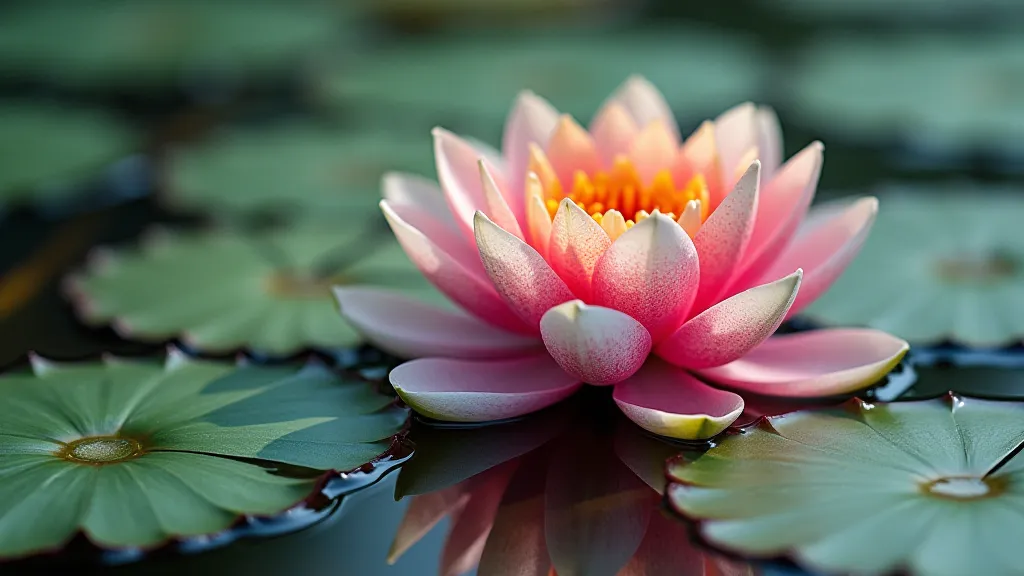
6. Planting Aquatic Plants
Healthy populations of aquatic plants, in addition to water lilies, compete with algae for nutrients. Plants like Anacharis, Hornwort, and Cabomba are particularly effective at nutrient uptake.
Troubleshooting Persistent Cloudiness
If you're still struggling with cloudy water, consider the following:
- Test Your Water: Use a water test kit to check pH, ammonia, nitrite, and nitrate levels. Imbalances can contribute to cloudiness.
- Consider a Pond Dye: A non-toxic pond dye can block sunlight, hindering algae growth.
- Consult a Pond Expert: If all else fails, seek advice from a local pond specialist.
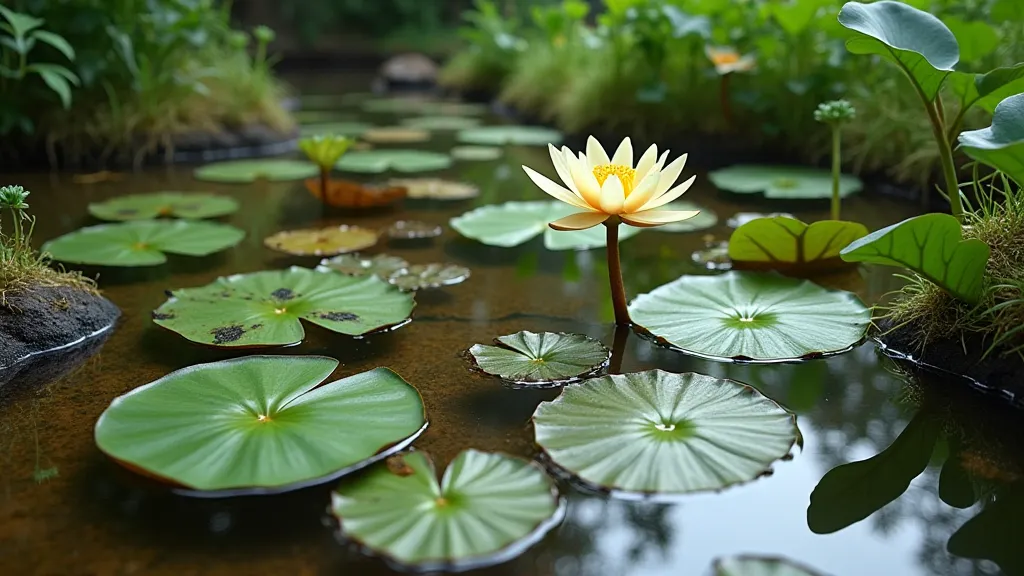
Conclusion
Maintaining water clarity in your water lily pond requires consistent effort and attention to detail. By implementing these techniques and addressing potential problems promptly, you can enjoy a beautiful and healthy aquatic environment for your water lilies and other pond life.
